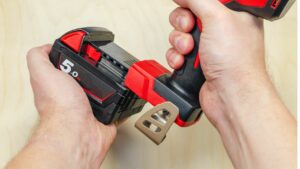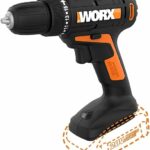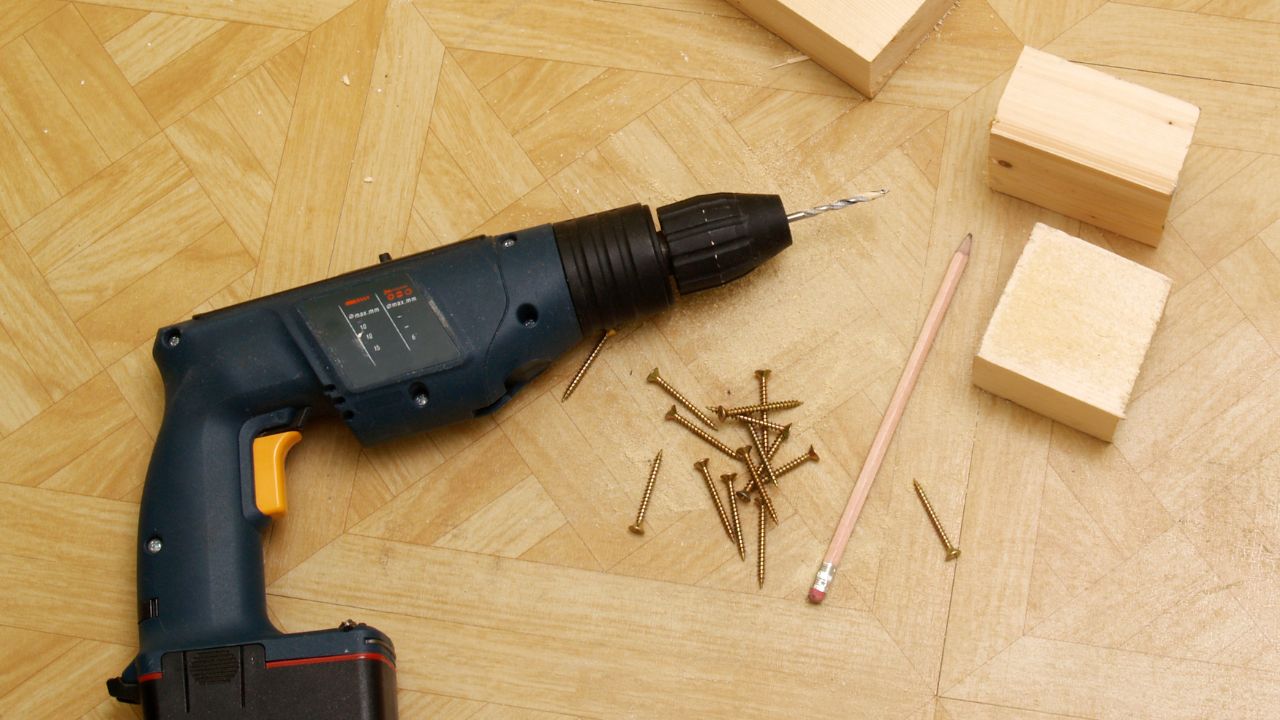Last Updated on October 16, 2023 by Pro Handyman Australia – Editorial Team
There’s no denying the immense utility and convenience that a cordless drill brings; that’s how important in learning the different types of saws, especially for DIY enthusiasts and those undertaking renovation projects. These power tools, known for their compactness, light weight, and portability, are indispensable for a myriad of basic handyman services. From hanging up portraits and carpentry woodworking services using a good quality drill to more ambitious undertakings like bathroom retiling or kitchen cabinet installations, a cordless drill is your trusty companion. However, like any power tool, it can experience wear and tear with frequent usage. If you’re frequently using your drill but aren’t exactly tech-savvy about power tools, you might sometimes wonder why it malfunctions due to cordless drill problems.
If you’re frequently using your drill but aren’t exactly tech-savvy about power tools, you might sometimes wonder why it malfunctions. Here, we delve into the most common issues associated with bosch cordless drills and their solutions.
Understanding Common Cordless Drill Issues
Drill Performance and Overheating

Overheating Dilemmas
One of the most frequently encountered issues with cordless drills is overheating. There are several culprits behind a drill overheating:
- Using inappropriate or mismatched drill bits can strain the drill, especially when delving into different types of drill bits and if it’s attempting to bore through materials that are overly resilient.
- Neglecting to use coolants or lubricants during drilling can escalate overheating, particularly when dealing with metal, masonry, or other dense materials.
- Continuous drilling without pauses can lead to excessive heat buildup.
- Drilling at incorrect angles, using a worn-out drill bit, or even a faulty drill chuck elevates the risk of overheating
If you detect a smoky odor emanating from your bit or sense your drill’s temperature rising, it’s crucial to halt your work and assess the situation. Always prioritize safety by refraining from using a drill that’s excessively hot; not only can it cause severe injuries, but it might also render your drill irreparable.
Reasons for Overheating:
- Operating the drill in areas with high ambient temperatures.
- Subjecting the drill to excessive workload.
- Short-circuiting within the drill.
- Lack of internal lubricants.
- Obstruction of the drill’s ventilation.
- Exerting undue pressure on the drill.
Solutions to Overheating:
- Operate the drill in cooler environments and avoid direct sunlight.
- Refrain from overburdening the drill with continuous work. Inspect the drill’s inner circuitry and trigger switch for any unusual smells.
- Inspect the drill’s internal circuitry and be alert for any unusual smells.
- Ensure the drill’s bearings are lubricated.
- Avoid obstructing the ventilation on either side of the drill.
- Apply only the necessary pressure when using the drill.
Managing Power Issues in Your Drill
If you’ve perceived a diminished efficiency in your drill’s performance, it might be grappling with power loss due to cordless drill problems. Notably, this isn’t always due to battery problems. Often, issues arise from the wear and tear of different parts of a drill. Older drills, naturally, might lose their vitality over time, but more often than not, the decline in power is attributed to inadequate maintenance of these parts. The initial diligence in cleaning and maintaining the drill might wane over time, leading to inner circuit issues. Overlooking these minor problems can cause your drill to exert more power than necessary, eventually leading to overheating or malfunctions. Regular maintenance is paramount to ensure optimal functionality.
Understanding Slow Drill Rotation
Reasons for Slow Rotation:
- Batteries are inadequately charged.
- The trigger switch isn’t fully engaged.
- Potential burning of coil or wire due to problems in the inner circuit.
- Wear and tear of brushes.
- Damage to the internal electrical pathway.
Solutions for Slow Rotation:
- Ensure batteries are charged up to 90% of their capacity. Avoid fully charging or fully depleting them.
- Examine the trigger for any obstructions or debris.
- Monitor for any partial burns in the armature coil due to irregular voltage.
- Regularly check brushes for wear, ensuring they maintain full contact with the commutator.
- Periodically inspect the drill’s internal electrical pathways.
Resolving Hammer Drill Activation Issues
Reasons Hammer Drill Mechanism Doesn’t Activate:
- Insufficient pressure applied to the tool.
- The battery isn’t adequately charged.
Solutions:
- Apply the appropriate pressure when using the tool.
- Always ensure the battery is fully charged before use.
Navigating Impact Mechanism Activation Concerns
Reasons Impact Mechanism Doesn’t Activate:
- The tool is in free rotation without any workload.
- Battery power is insufficient.
- Increased internal friction.
Solutions:
- The impact mechanism functions under load. Test it by using a screw.
- Ensure the battery is fully charged before use.
- Lubricate internal components, especially where the hammerhead interacts with the anvil.
Maintenance and Longevity of Drill Components
Battery Challenges with Cordless Drills
Maintaining your drill’s battery is as critical as looking after the drill itself. Several factors can compromise your battery’s health:
- Exposure to cold weather can cause drill batteries to freeze.
- Natural wear and tear from frequent usage can deplete battery life.
- Exerting excessive force during drilling can curtail the battery’s lifespan.
- Heavy-duty drilling, especially on tougher materials like masonry, can quickly drain the battery.
It’s worth noting that investing in a premium-quality drill can significantly enhance battery longevity, reducing the frequency of replacements and addressing the common question of how long cordless drill batteries last.
Tackling Battery Charging Issues
Reasons the Drill Battery Isn’t Charging:
- Battery is no longer functional.
- The charger isn’t properly connected to the battery.
- The power source isn’t activated.
- Internal short-circuiting.
- Temperature extremes affecting the battery.
Solutions:
- If the battery is no longer functional, look into reviving or replacing it.
- Inspect the charger and battery connectors for any obstructions, and ensure they are properly connected.
- Confirm the power source is correctly connected and switched on.
- Be vigilant for signs of internal damage due to heat or dust.
- Be aware that extreme battery temperatures can activate a safety mechanism, preventing usage. Allow the battery to return to a moderate temperature before attempting to use.
Addressing Overheating in Drill Batteries
Reasons for Battery Overheating:
- Operating in high-temperature environments.
- Using the battery with tools that demand higher capacity.
- Continuous operation without breaks.
Ways to Prevent Battery Overheating:
- Avoid using the drill in excessively warm conditions.
- Ensure compatibility; for instance, using an 18V battery in a 24V tool can result in overheating due to increased current demand.
- Allow intervals for the tool to cool down during extended operations.
Addressing Wear and Tear of Drill Parts
Another predominant concern is the degradation of the drill parts. Regular servicing and vigilant maintenance of your tool can mitigate the risks associated with worn-out parts. Over time, these deteriorated components can exacerbate damage. Sometimes, the decline might be so gradual that it becomes noticeable only when the drill ceases to function entirely. Persistently using a drill with worn-out parts can compel you to apply excessive force, intensifying the damage further. Periodic servicing and proactive maintenance are essential to prevent such pitfalls.
Managing Drills that Emit Smoke or Sparks
Reasons for Smoking or Sparking:
- The brushes have deteriorated.
- Accumulation of debris on the commutator and brushes.
- Ventilation obstructed during operation.
- Bearings lacking lubrication.
Solutions:
- Replace brushes once they’ve worn down to 3/4 of their original length.
- Clean both brushes and commutator using an appropriate electrical cleaning solution.
- Ensure the drill’s ventilation remains unobstructed during use.
- Regularly service and lubricate the drill’s components.
Identifying the Causes of Unpleasant Odors in Drills
Reasons for a Bad Smell from the Drill:
- Internal components may melt from excessive heat.
- Lubricants and grease might be getting excessively hot.
- Inner plastic parts could be melting due to elevated temperatures.
- Overall overheating of the tool.
Steps to Address Drill Odors:
- Elevated temperatures can cause internal coils and plastic parts to melt, releasing an odor.
- Over time, accumulated dust mixed with lubricants and grease can emit a smell when subjected to high temperatures.
- To mitigate these effects, allow the drill to cool down and avoid using it in rapid succession.
Drill Bit Issues and Solutions

The drill bits you employ play a pivotal role in determining the performance of your drill. Utilizing bits that don’t align perfectly with the drill, especially when not selecting the right types of wood drill bits, increases the likelihood of them slipping, jeopardizing both the tool’s integrity and your safety. Ill-fitting bits are prone to getting lodged or cause your drill to overheat. Moreover, employing inappropriate bits for specific materials can inflict significant, sometimes irreversible, damage. Opting for high-quality drill bits from reputable manufacturers ensures the bits are tailored for the intended material and purpose. Additionally, it’s imperative to select the appropriate bit size for the task at hand.
Understanding Loose Drill Chucks
Reason for Chuck Looseness:
- The chuck may become loose if the bearing ball doesn’t move properly inside the hex shank.
Solution to Fix a Loose Chuck:
- Replacing the bearing ball and updating the internal springs can remedy the issue. If you’re unfamiliar with this procedure, consulting a guide or seeking professional assistance is recommended.
Hands-on User Experience with Cordless Drills
The world of cordless drills is vast and varied. Different brands and models cater to a diverse range of drilling needs, but the real testament to a drill’s performance is the feedback from those who’ve used it. Let’s dive into some hands-on experiences from users:

DEWALT ATOMIC 20V MAX: Jake, a regular DIY enthusiast, mentioned, “I’ve been using the DEWALT ATOMIC 20V MAX for over six months now. The battery life is impressive, and it has handled everything I’ve thrown at it. I did face a minor overheating issue once, but that was after continuous use for a good 5 hours. Overall, a worthy investment.”

Worx WX101L.9: An experienced carpenter, Rachel, shared, “The Worx WX101L.9 has been my go-to drill for all my woodworking projects. It’s light, powerful, and the battery charges quickly. However, I’ve had to replace the drill bits more often than I’d like. Not a deal-breaker, but something to consider.”
From these firsthand experiences, it’s evident that while every model has its strengths, some common cordless drill problems persist across the board. It’s always recommended to consider user feedback and not just rely on brand reputation when making a purchase decision.
In-depth Comparisons of Top Cordless Drills
When diving into the world of cordless drills, an in-depth comparison can help steer you towards the perfect tool for your needs. Let’s look at how two popular models stack up against each other:
| Feature | DEWALT ATOMIC 20V MAX | Worx WX101L.9 |
|---|---|---|
| Power (Torque) | 80 Nm | 75 Nm |
| Battery Life | 2 Hours Continuous | 1.5 Hours Continuous |
| Charge Time | 45 minutes | 30 minutes |
| Price | $180 | $165 |
From our comparison table, the DEWALT ATOMIC 20V MAX offers slightly more power and longer battery life, whereas the Worx WX101L.9 edges out in quicker charging time and a slightly lower price.
Making a choice depends on what’s more critical for your projects: power and longevity or quick charging and cost-saving. For instance, when learning how to drill into stucco, it’s essential to consider the tool’s strength and durability. Either way, when considering the different types of drills, remember to always think about the specific needs of your tasks and how often you’ll be using the drill. This reflection ensures you select a tool that is not only fit for purpose but also durable and efficient for frequent use.
Wrapping Up
In conclusion, diligent care and regular maintenance of your cordless drill are the cornerstones to prolonging its lifespan. By addressing power issues, ensuring the right fit of drill bits, and timely servicing, you can derive the maximum utility from your tool, paving the way for a myriad of successful projects in the years to come.
